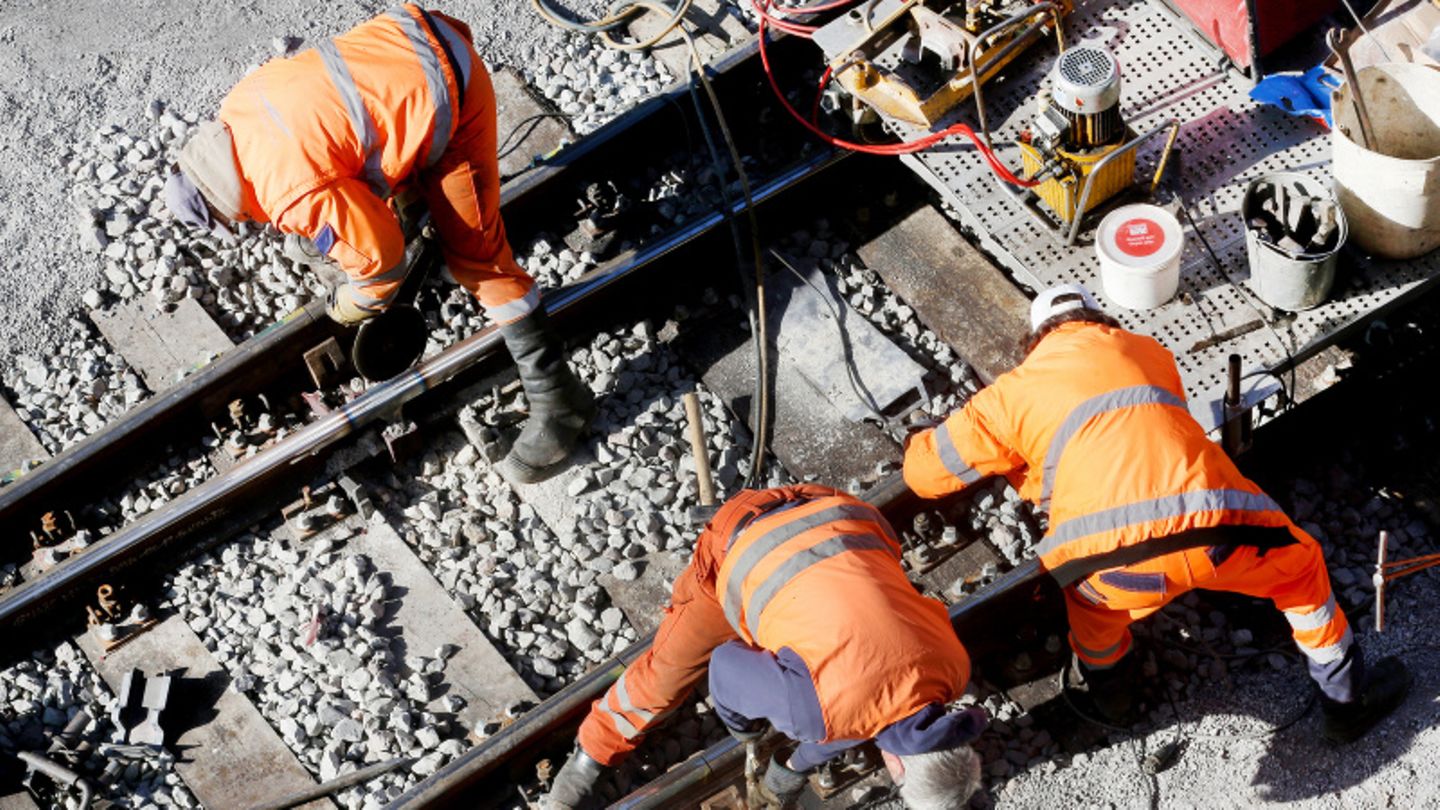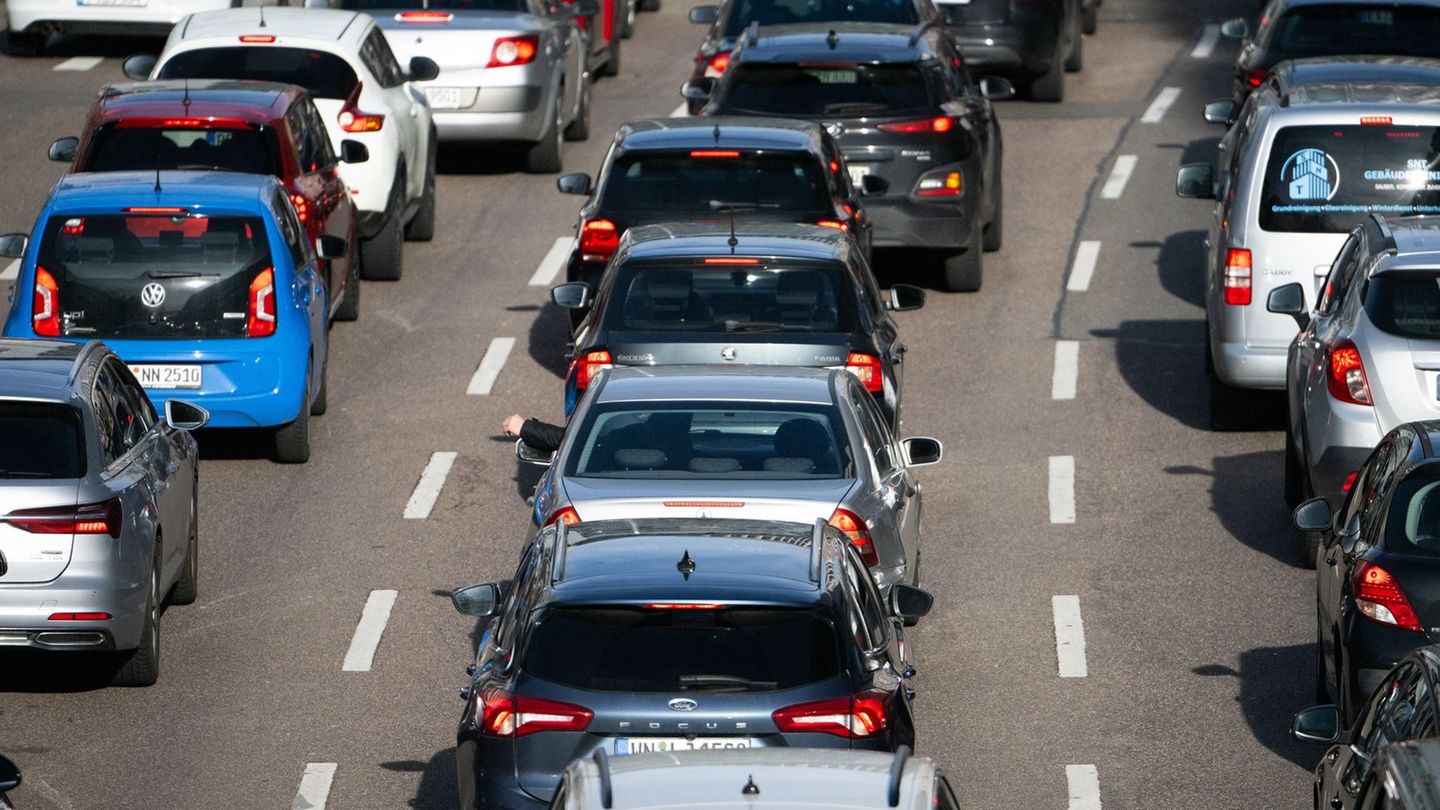Deutsche Bahn is planning the largest investment package in its history. In 2022, more than 13 billion euros are to flow into the infrastructure. Meanwhile, travelers will have to be prepared for more frequent delays.
Delays, dilapidated tracks, aging stations: there are many construction sites at Deutsche Bahn. Some are now to be addressed. With record investments in infrastructure and digitization, Deutsche Bahn wants to make the rail network more efficient and hire thousands of new employees this year.
As the group announced on Thursday, a total of 13.6 billion euros are to flow into the rail infrastructure from the railways, the federal government and the states in 2022 – that is 900 million euros more than in the previous year and the highest annual investment sum in the company’s history.
Deutsche Bahn wants to hire 4,800 additional specialists
According to the state-owned group, around 1,800 kilometers of track, 2,000 switches, 140 bridges and over 800 stations are to be modernized. That is around 15 percent of all train stations in Germany.
The project is “a real tour de force that we can only achieve as a strong team,” said Infrastructure Board Member Ronald Pofalla. “We are hiring 4,800 additional specialists this year alone.” 2,600 engineers and site supervisors as well as 2,200 specialists for expansion and maintenance are to join the company.
According to Deutsche Bahn, the “investment offensive” has two major focal points: digitization projects such as the conversion to the ETCS (European Train Control System) control and safety system and “more space on the rails” through the expansion and new construction of important infrastructure projects such as the High-speed line between Wendlingen and Ulm. According to Pofalla, this is “an important step on the way to putting Stuttgart 21 into operation”.
“Higher investments also mean more construction sites in the network”
According to the company, Deutsche Bahn is currently working on more than 175 infrastructure projects, including major hubs in the rail network such as Hamburg, Munich, Cologne, Frankfurt am Main and Stuttgart. The rails are also to be extended on many routes and in service facilities in order to be able to move freight trains of up to 740 meters in length. Work is also being done on the electrification of the routes.
In addition, the railways also want to rely on smaller measures to make the rail network less susceptible to disruption. For example, the installation of additional switches and the use of auxiliary bridges should ensure “that the train traffic runs reliably even during construction work,” the company said. Because higher investments meant “more construction sites in the network,” explained Pofalla. This could result in more frequent delays.
Despite the planned construction measures, the railway wants to keep the inconveniences for passengers as low as possible. “Customer-friendly and capacity-saving construction” is “right at the top of the agenda,” explained Pofalla. This is to be achieved through better planning of journeys, better construction planning and additional construction infrastructure.
In order to implement the construction projects faster and more efficiently, Deutsche Bahn also gets animal help: Specially trained species detection dogs are used for the first time to search construction sites for animals that are protected species. According to the information, the dogs can sniff out protected animals at any time of the year and in any weather – so far this task has been taken over by humans in a time-consuming process.
Source: Stern
Jane Stock is a technology author, who has written for 24 Hours World. She writes about the latest in technology news and trends, and is always on the lookout for new and innovative ways to improve his audience’s experience.




